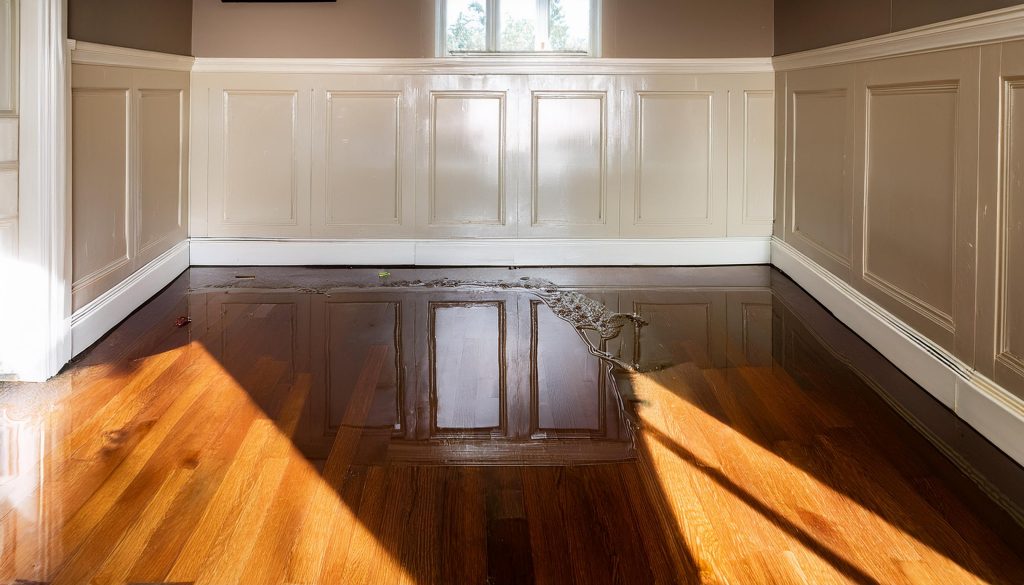
DIY Guide to Water Damage Restoration
Water damage can range from a minor leak to major flooding, and if not addressed promptly, it can lead to long-term damage and health hazards. This DIY guide will help you tackle water damage cleanup and restoration effectively, ensuring your home is safe and dry.
Understanding Water Damage Categories
Clean Water (Category 1): This comes from a sanitary source like rain, melting snow, or leaky water supply lines. This category poses no substantial risks to your health.
Gray Water (Category 2): This water is contaminated and may cause discomfort or illness upon exposure. Common sources include washing machines, dishwashers, and overflowing toilets (without solid waste).
Black Water (Category 3): This highly contaminated water contains harmful bacteria, toxins, or pathogens. It often originates from sewage backups or flooding from rivers. This category can cause serious health issues, keep your family and pets away from the contaminated area.
Step-by-Step DIY Water Damage Cleanup
- Safety First
Before starting the cleaning process, ensure your safety:
- Turn off electricity: Water and electricity do not mix well, so make sure to cut off power to the areas directly impacted by standing water.
- Wear protective gear: Make sure to use gloves, boots, and masks to protect yourself from any contaminants you may be handling.
- Identify the source: If necessary, make sure to stop the flow of water by shutting off the main water supply.
- Water Removal
Efficient water removal is crucial to prevent further damage from occurring:
- Use pumps and wet/dry vacuums: For large volumes of water, pumps are essential. For smaller areas, a wet/dry vacuum can do the job.
- Mop and soak up: For minor leaks, mopping and soaking up the water with towels can be effective.
- Drying The Area
Thorough drying prevents mold growth and prevents wood from experiencing rot:
- Use dehumidifiers and fans: Place dehumidifiers and fans around the affected area to speed up the drying process.
- Open windows and doors: Increase ventilation to help dry out the space faster. Be mindful that if it is wet or humid outside leave windows and doors shut to prevent excess moisture.
- Cleaning and Disinfecting
Sanitizing the area is vital, especially for gray or black water damage:
- Remove damaged materials: dispose of soaked carpets, drywall, and insulation that cannot be salvaged.
- Note: Save a piece of flooring or wall coverings to show to your insurance assessor.
- Clean surfaces: Use a mixture of water and bleach (1:10 ratio) to clean hard surfaces and prevent mold growth. Make sure to wear gloves to protect yourself.
Step-by-Step DIY Water Damage Restoration (Putting it Back Together)
Once the cleanup process is complete, reconstruction begins. This involves repairing and restoring your home to its pre-loss state.
- Assess the Damage
Thoroughly inspect the affected areas to determine what materials and measures will be needed to reconstruct your property:
- Check structural elements: Inspect floors, walls, and ceilings for stability.
- Evaluate furnishings: Decide whether to restore or replace damaged furniture and personal belongings.
- Repair and Replace
Restoration involves repairing and replacing damaged components of your home:
- Replace Drywall and insulation: Remove and replace any drywall or insulation that was damaged.
- Repair flooring: Replace water-damaged floorboards, tiles, or carpets.
- Fix plumbing issues: Ensure any leaks or broken pipes are repaired to prevent future water damage.
- Mold Prevention
Mold can start growing within 24-48 hours, so mold prevention is crucial.
- Use mold inhibitors: Apply mold inhibitors to cleaned and repaired surfaces.
- Maintain low humidity: Keep indoor humidity below 60% to prevent mold growth.
- Final Touches
Complete the restoration process.
- Repaint and refinish: Once everything is dry and repaired, repaint walls and refinish floors.
- Deep clean: Clean carpets, rugs, and upholstery to remove any lingering odors or contaminants.
- Test for moisture: Use a moisture meter to ensure all areas are completely dry.
Tips For Effective Water Damage Cleanup and Restoration
- Act Quickly: The sooner you start the cleanup and restoration process, the less damage your property will sustain.
- Document the Damage: Take photos and videos of the damage for insurance purposes.
- Monitor Humidity Levels: Keep indoor humidity below 60% to prevent mold growth.
- Use the Right Tools: Renting professional-grade drying and cleaning equipment will make the process more efficient.
- Consult Professionals for Severe Damage: If the damage is extensive, consider hiring a water damage restoration professional. Contact our team if your water damage issue is too much to handle alone!